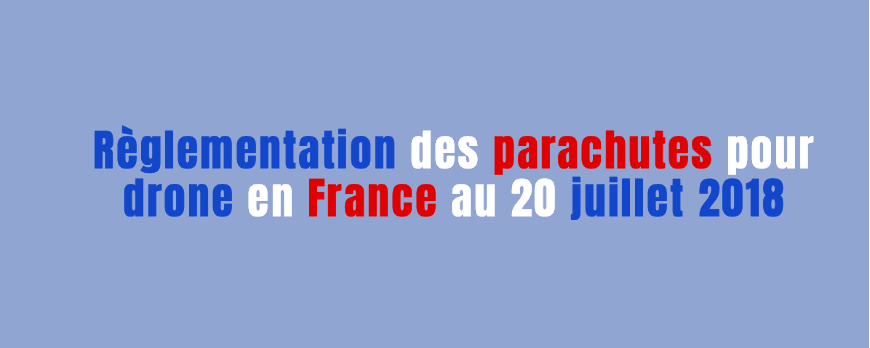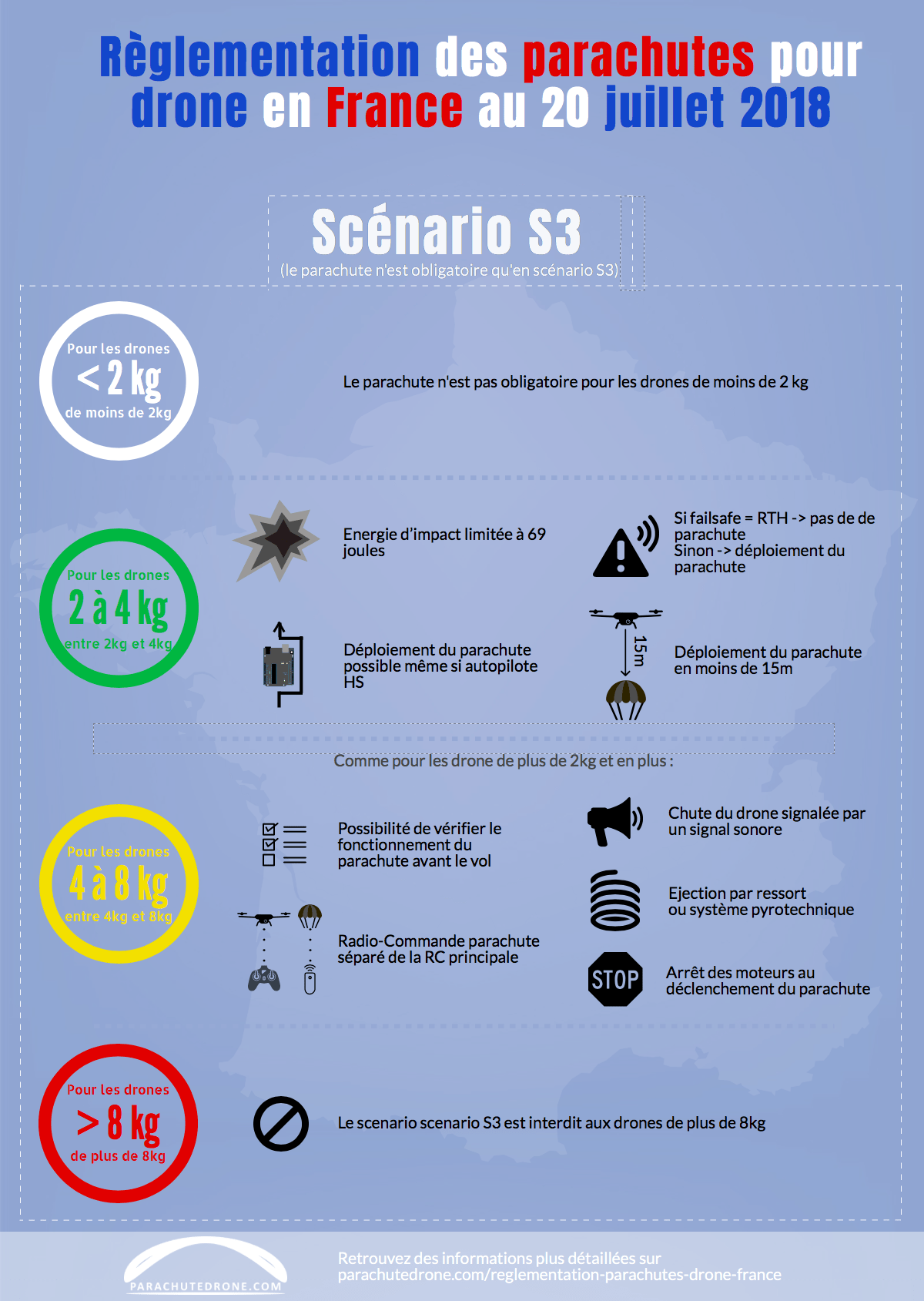Cart
0
0
item(s)
-
0,00 €
No products
To be determined
Shipping
0,00 €
Total
Quantity
Total
Product successfully added to your shopping cart
There are 0 items in your cart.
There are 0 items in your cart.
Total

Regulation of parachutes for drone in France on July 20, 2018
Outside the S3 scenario -> The parachute is not mandatory
For a drone weighing less than 2 kg
- No need for parachute
For a drone between 2kg and 4kg in S3 scenario
- Parachute limits impact energy to 69 joules
- The parachute must be able to be controlled without going through the autopilot. So either by a free channel of the receiver, or by a separate receiver dedicated to the parachute
- The parachute must deploy completely in less than 15 meters of fall
- The parachute must be triggered automatically if the failsafe mode consists of a simple stop of the engines, against if the failsafe consists of an automatic return to the starting point, the parachute must not be triggered
And more for drones over 4 kg in S-3 scenario
- The triggering of the parachute must also stop the engines
- The radio control and the parachute receiver must be independent of the radio control and the main receiver (which is used to control the drone)
- A sound signal placed on the drone must signal its fall.
- The parachute must be ejected by a spring or a pyrotechnic system and not simply deployed by gravity
- The proper operation of the parachute must be able to be checked before each flight
Beyond 8kg
- Scenario S-3 impossible

Link to full size image : https://parachutedrone.com/img/cms/reglementation-des-parachutes-pour-drone-en-france-au-20-juillet-2018.png
We are talking here only about non-captive drones and parachute, no airbag or other system of protection of third parties.
DSAC guide - Aircraft flowing without anyone on board: special activities - Edition 1 Version 4 - 20/07/2018: https://www.ecologique-solidaire.gouv.fr/sites/default/files/Guide_drones_activites_particulieres.pdf
Posted on
09/17/2018
by
0
7160
Leave a CommentLeave a Reply
Blog archives
Featured Products
Latest Comments
-
POPPRE Zoltan
on Parachutes, DGAC, drones and S3 scenario - New... -
Marchico Robert
on Rescue parachutes for multirotor drones -
Gaël Billon
on Automatic parachute deployment with Pixhawk -
Gaël Billon
on Automatic parachute deployment with Pixhawk
Blog search
New products
No New products






